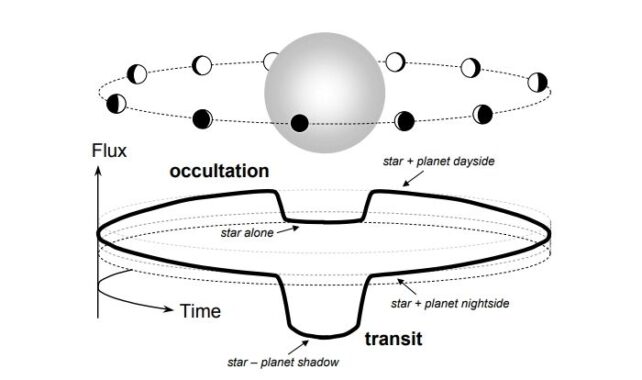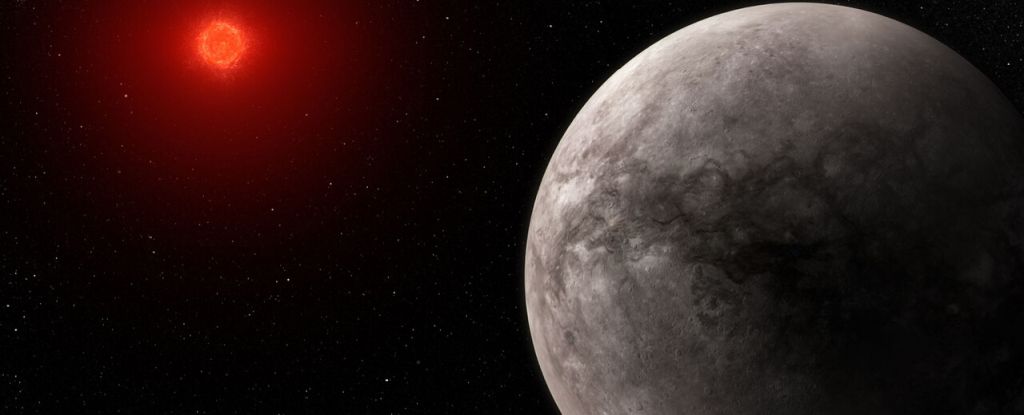An Earth-sized exoplanet in perhaps the most promising alien system for life signs is unlikely to be habitable for life as we know it.
New observations from James Webb Space Telescope reveal that the innermost world of the TRAPPIST-1 system, an exoplanet called TRAPPIST-1b with 1.4 times the mass and 1.1 times the radius of Earth, will reach a sizzling 230 degrees Celsius (446 degrees Fahrenheit) and likely no atmosphere has wrapped around its rocky body.
This is no surprise; TRAPPIST-1b is so close to its parent star that it spins around in just 1.5 days and is 4 times more strongly irradiated by Earth; But this is the first time we’ve been able to make these measurements for such a small and cool world — the closest even to our own planet.
And of course, the information will help scientists learn more about the other six exoplanets known to orbit the red dwarf star TRAPPIST-1, a system whose possible habitability is unknown.
“It’s easier to characterize terrestrial planets around smaller, cooler stars,” explains the astronomer Elsa Ducrot the French Alternative Energies and Atomic Energy Commission (CEA) in France.
“If we want to understand the habitability around M stars, the TRAPPIST-1 system is a great laboratory. These are the best targets we have for studying the atmospheres of rocky planets.”
The discovery of the TRAPPIST-1 system was reported in 2017, seven rocky exoplanets orbiting a red M dwarf star 40 light-years away. Three of these exoplanets are within the star’s so-called habitable zone — at a distance from the star that is not close enough for all liquid water to evaporate, nor close enough for it to freeze.
It’s a really tempting target in the search for extra-solar system life, but TRAPPIST-1 has some major differences from the solar system that raise the question of whether or not life could arise there.
The worlds around it are much closer to the star than our home system, with the furthest lying in an orbit of just 18.8 days. Because red dwarfs are much smaller, dimmer, and cooler than the Sun, this means the habitable zone is much closer to the star… but red dwarfs are much harder as the sun lashing the space around them with mighty torches.
“There are ten times as many of these stars in the Milky Way as there are stars like the Sun, and they are twice as likely to have rocky planets as stars like the Sun.” says astrophysicist Thomas Greene from NASA’s Ames Research Center.
“But they’re also very active — they’re very bright when they’re young, and they give off flares and X-rays that can obliterate an atmosphere.”
TRAPPIST-1b is the first step in understanding how this activity may have affected the system. Previous studies using instruments like Hubble and Spitzer had ruled out a faint, bloated atmosphere around the exoplanet, but the possibility that TRAPPIST-1b still harbored a thick, dense atmosphere remained.
This is where JWST’s infrared capabilities came to the fore. The researchers used the space telescope’s unique power to attempt to measure TRAPPIST-1b’s temperature — the infrared light emitted by thermal radiation emanating from the exoplanet.

The key lay in the light curve created as the exoplanet orbits the star. When an orbiting exoplanet passes between us and the star, the exoplanet blocks some of the star’s light, dimming it a bit.
But as the exoplanet passes behind the star – an event known as a secondary eclipse – an eclipse can also be seen.
This is because when the exoplanet is on either side of the star, it reflects some of the star’s light and also emits its own radiation, increasing the total light observable from the system. This means that all light observed during the secondary eclipse will be emitted only by the star.
By extracting the extra light that can be seen when the exoplanet diverges to either side, as well as the estimated reflected starlight, scientists can determine how much infrared radiation is being emitted by the exoplanet itself, and thus measure its temperature. And this, in turn, can reveal the presence or absence of an atmosphere.
“This planet is locked from the tides, with one side always facing the star and the other in permanent darkness.” says CEA astronomer Pierre-Olivier Location of CEA. “If there’s an atmosphere to circulate and redistribute heat, the dayside will be cooler than if there’s no atmosphere.”
The researchers were able to capture five secondary solar eclipses for TRAPPIST-1b and extract a daily temperature of around 230 degrees Celsius from these events. This temperature is cooler than that though day side of Mercury in the solar system, is inconsistent with the presence of an atmosphere.
“We compared the results with computer models showing what the temperature should be in different scenarios,” says Ducrot.
“The results agree almost perfectly with a black body of bare rock and no atmosphere to circulate heat. We also saw no evidence of light being absorbed by carbon dioxide, which would be evident in these measurements.”
Future work, the researchers say, could further characterize TRAPPIST-1b’s global heat distribution to better understand rocky planets orbiting red dwarf stars and how those systems differ from our own.
The research was published in Nature.





